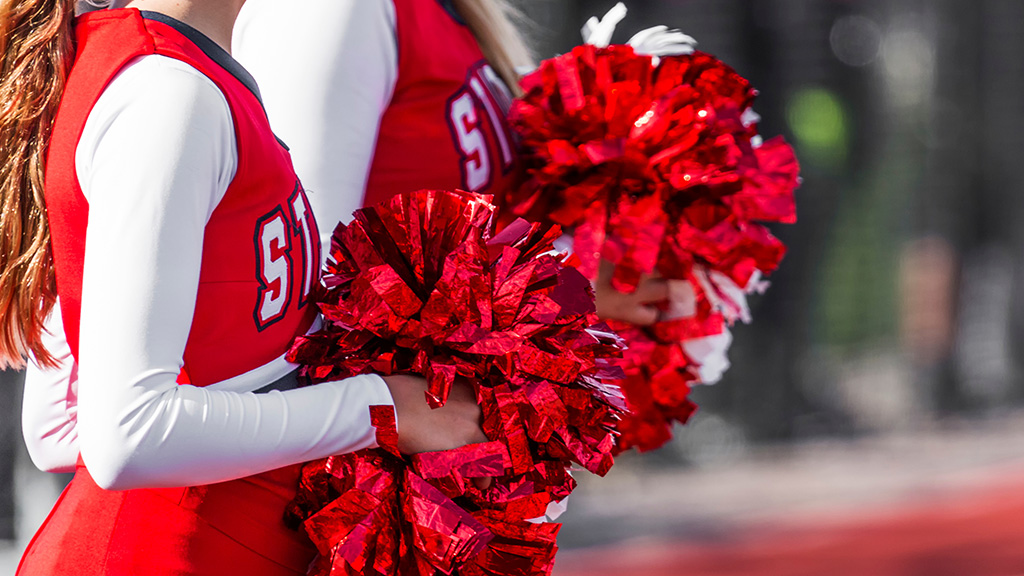
In the summer of 2021, as the COVID-19 pandemic continued to rage and schools prepared for another stressful school year, the U.S. Supreme Court decided its first student speech case in 15 years. The case, Mahanoy Area School District v. B.L., further complicates schools’ ability to discipline off-campus student speech that negatively impacts the school environment. With all that was going on at the time, Mahanoy did not have much practical impact on schools.
Now is a good time for school boards to apply the lessons learned from the case to their policies and procedures. Doing so can maximize the chances that schools can adequately respond to disruptive speech by students, including bullying, harassment, and threats, despite the new challenges of the decision.
Mahanoy involved a profanity-laden Snapchat outburst by a Pennsylvania high school cheerleader. When the student, B.L., learned that she did not make the varsity cheerleading team, she posted on Snapchat a picture of herself raising her middle finger with the comment “f--- school f--- softball f---cheer f---everything.”
It was Saturday. B.L. was not on campus; she was at a neighborhood convenience store. She was not at a school-sponsored event and was not using school technology. Although the “Snap” quickly disappeared—as they are intended to do—another student took a picture of B.L.’s post and shared it with school officials.
The school suspended B.L. from cheerleading for the rest of the school year. It relied on a Supreme Court decision from 1965, Tinker v. Des Moines Independent Community School District. In that case, a school was prohibited from suspending students for wearing black armbands to school to protest the Vietnam War. Although the Court decided against the school in Tinker, it set forth a standard for when schools can discipline students for speech at school. Specifically, it found that schools can discipline student speech at school if they can reasonably forecast that the speech will substantially disrupt school activities or invade the rights of others.
Schools have been applying the Tinker standards for decades, including to off-campus speech. Many courts below the Supreme Court have upheld that use of Tinker, often imposing a “nexus” requirement on schools before Tinker could be used to reach off-campus speech. Under the nexus theory, courts required some connection between the speech and the school environment before the district could use Tinker to address off-campus speech. Some factors that could establish a nexus include the speaker injecting the speech into the school environment or sharing false information that would reasonably lead individuals to contact the school.
In Mahanoy, the school cited the impact B.L.’s conduct could have on the cheer coaches’ ability to maintain respect and order on the team and the confidence and trust of B.L. by other cheerleaders on the team. This was the basis for its finding that there was a sufficient disruption under the Tinker standard. B.L.’s parents sued, arguing the suspension from cheer violated B.L.’s First Amendment right to free speech. The case made it all the way to the U.S. Supreme Court.
Tinkering with Tinker
The Supreme Court affirmed that Tinker could apply to off-campus speech in its decision. Specifically, it noted that certain types of conduct that occur off school grounds and outside of school hours “may call for regulation,” including:
- Serious or severe bullying or harassment targeting particular individuals.
- Threats aimed at teachers or other students.
- The failure to follow rules concerning lessons.
- The writing of papers.
- The use of computers or participation in other online school activities.
- Breaches of school security devices, including material maintained within school computers.
In contrast, certain other types of speech deserve heightened protection. For example, political or religious speech outside school or a school program or activity would require significant justification for a school to limit or discipline it.
The Court then considered when a school could discipline off-campus speech. Instead of using the nexus standard that many courts have been using for decades, the Court said that the circumstances justifying such discipline would vary based on the student’s age, the nature of the specific off-campus activity, and the impact on the school itself.
The Court mentioned three features of off-campus speech that reduce a school’s ability to regulate such speech. Those factors are:
- When students are off campus, a school will rarely stand in the role of parents (in loco parentis) as they do when students are in school.
- Because regulations of off-campus speech are 24 hours a day, seven days a week, courts must be more skeptical of a school’s efforts to regulate off-campus speech, for doing so may mean the student can never engage in that speech at all.
- The school itself has an interest in protecting unpopular student speech, especially when it occurs off campus, because of the important role schools play in protecting the “marketplace of ideas” that is the foundation of our democracy.
The Supreme Court did not decide whether the school could regulate B.L.’s speech using its new “standard.” Instead, it moved on to the Tinker test itself, asking whether there was a sufficient disruption to the school environment to regulate the speech. The Supreme Court said that even if the district had the right to regulate B.L.’s speech under Tinker, it failed to show an adequate “substantial disruption” to discipline B.L. under that test.
In reaching that determination, the Supreme Court noted that B.L.’s speech, although profane, when taken in context with another Snap she sent that day, criticized the rules of the cheerleading community. The Court also said that B.L.s’ speech was not fighting words or obscenity that would fall outside First Amendment protections. And her speech occurred off-campus, outside of school time, via a personal device, and to a limited audience of her private circle of Snapchat friends. It did not identify the school or target any school community member with vulgar or abusive language.

Takeaways from Mahanoy
Mahanoy is a good decision for schools in many ways. It recognizes that schools can discipline certain types of off-campus speech. But it also creates a new standard that departs from the one districts have used for years to discipline such speech. School boards should review their policies and direct administration to review related procedures to correctly describe the situations in which schools can reach disruptive speech that occurs off-campus. What should your board consider?
First, school boards should consider whether their acceptable use of technology policies adequately notify students and parents that misuse of school technology is subject to discipline, no matter where the misconduct occurs. Making the reach of the school district’s acceptable use policy clear will help both administrators and families understand what conduct is problematic.
Such policies must be applied even-handedly to misconduct regardless of the content of the speech involved. For example, suppose a school board’s acceptable use policy says that students cannot use school-issued devices for more than minimal personal use. In that case, a school can discipline a student who uses the device to send multiple objectionable communications to another student, regardless of what the statements say or where the conduct occurs. However, if a school selectively applies the rule to only some students based on the content of their speech, the First Amendment could be implicated.
Governing documents, whether board policies, administrative procedures, or even more informal guidance, also should provide guidelines to administrators regarding the circumstances under which a student’s off-campus, online misconduct can be disciplined. Discipline policies, discrimination policies, grievance procedures, and other similar policies should clearly explain the types of conduct Mahanoy describes as most likely to warrant discipline—including harassment, bullying, and threats. They should then explain that such conduct can be disciplined no matter where it occurred.
With rapidly changing areas of law such as this, the best practice is to work with legal counsel before imposing consequences on a student for off-campus speech. Building administrators often move quickly, imposing discipline before seeking assistance, so it is important to guide those on the frontlines in the right direction.
Require training for administrators at the building level who are involved in discipline decisions, so they take sufficient care with off-campus, online conduct cases. Consider providing greater authority for such individuals to access legal advice before making a decision.
Taking these steps will not guarantee that your school district always gets these new rules right. We all will be learning together how best to apply the Supreme Court’s new standard. But updating your policies, procedures, guidelines, and practices now will put your school district in the best position to handle the next instance of off-campus, online speech that comes your way.
Jackie Wernz (jwernz@thompsonhorton.com) is a partner at Thompson & Horton LLP, Houston, Texas.

Share this content